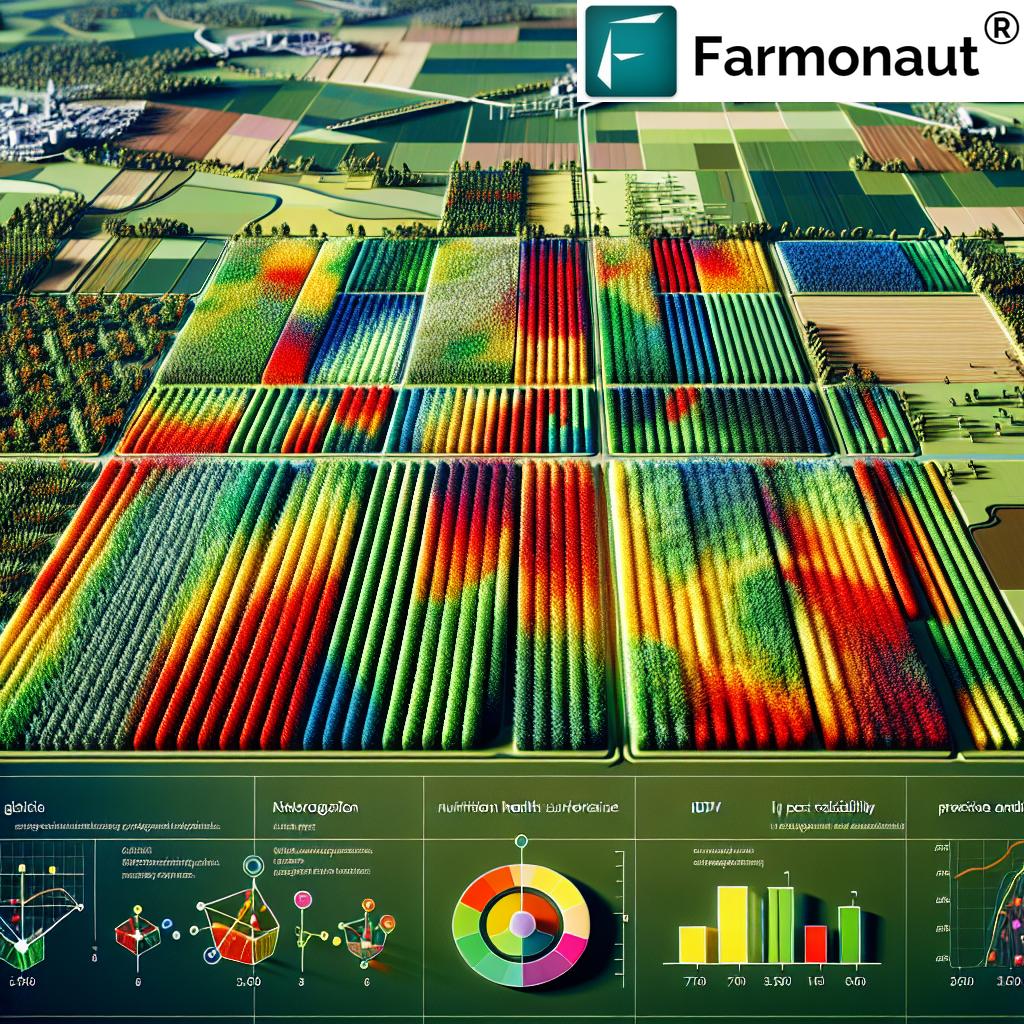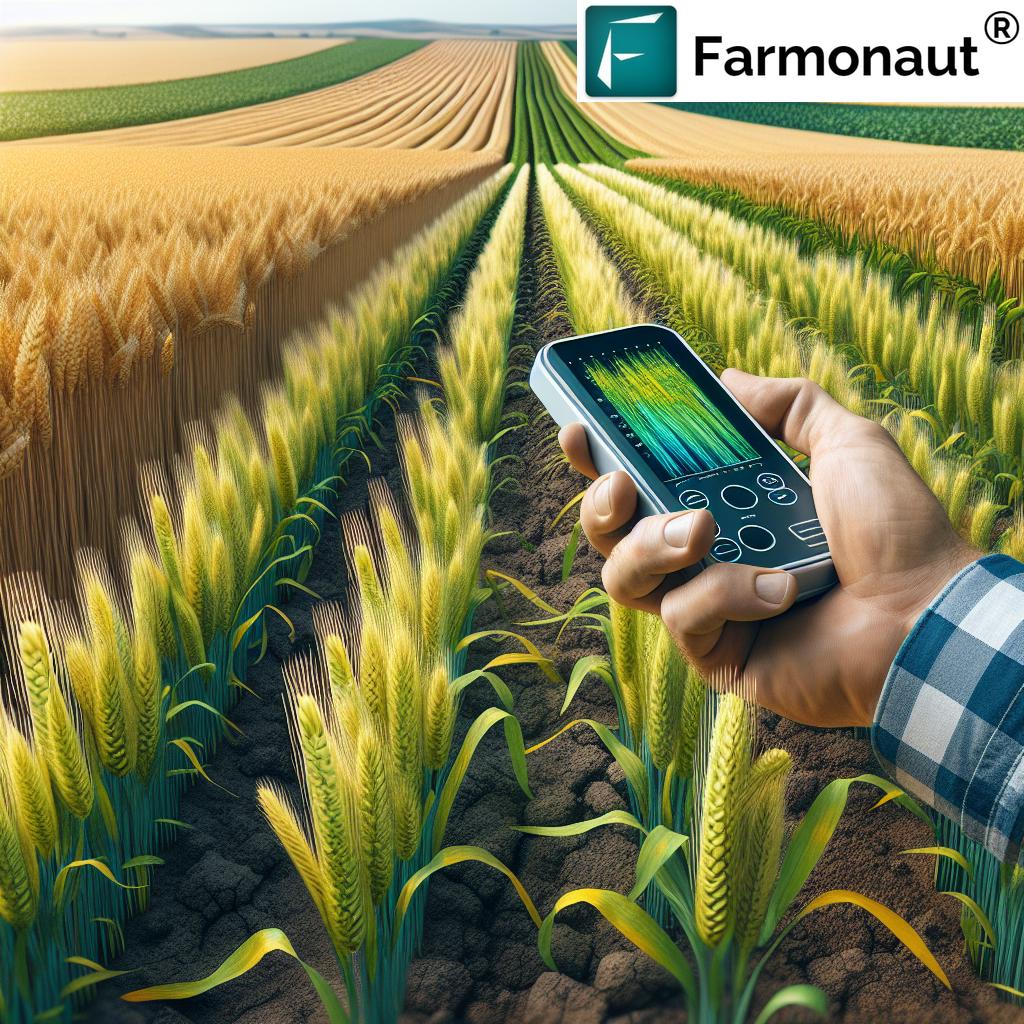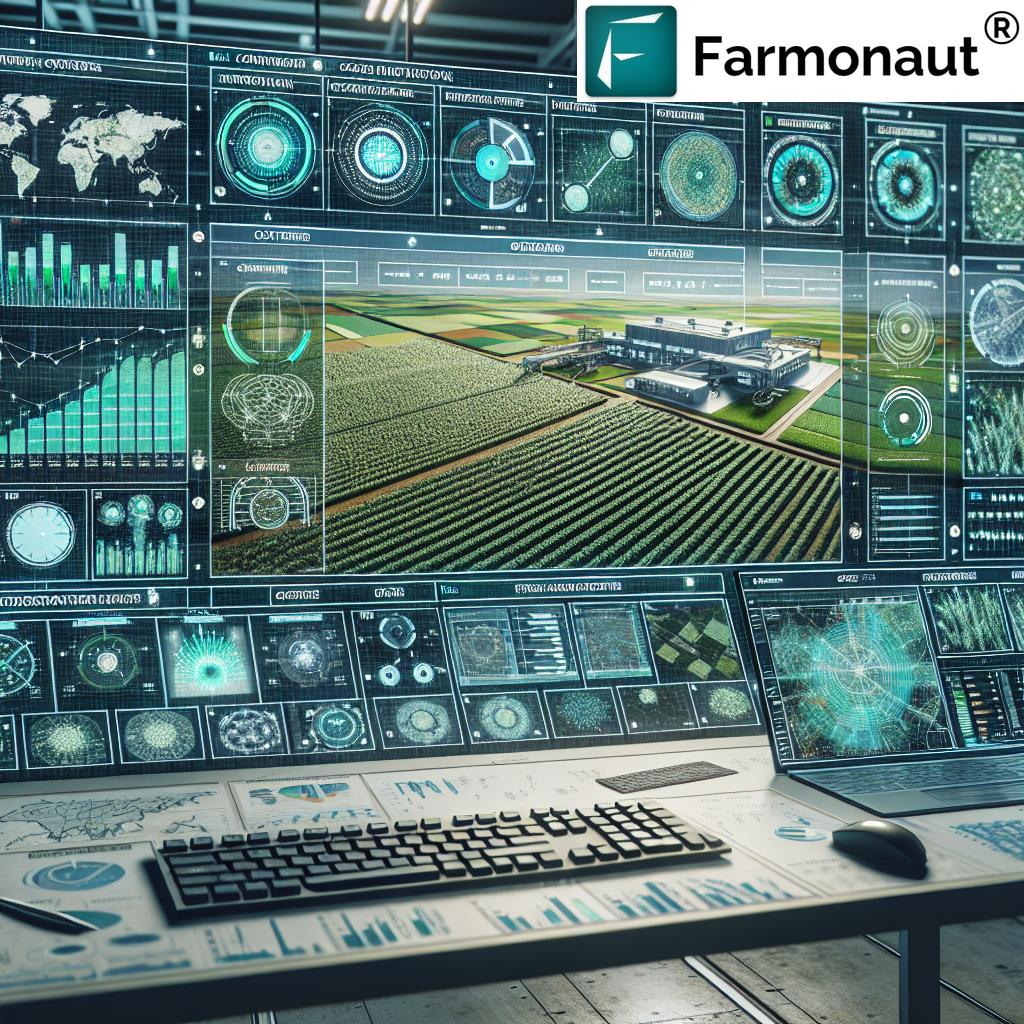Advantages of Robots & Smart IoT in Agriculture: 2025 Guide
“By 2025, agricultural robots are projected to increase crop yields by up to 30% through precision farming techniques.”
Introduction: Advancements Driving Next-Gen Agriculture
Advancements in agricultural technology are profoundly reshaping how we grow, monitor, and manage crops and resources worldwide. By 2025, the advantages of robots in agriculture, smart IoT systems, climate-smart agriculture (CSA), and genetically modified (GM) crops stand out as pivotal elements driving efficiency, productivity, and sustainability across the farming sector. This article explores these innovations, presenting an in-depth guide to their benefits, functionalities, and the challenges associated with their widespread adoption.
Whether you’re a farmer, agritech investor, policy maker, or just passionate about the future of farming, understanding these powerful tools and concepts is essential for navigating the modern agricultural landscape.
“Over 60% of farms adopting GM crops report reduced pesticide use, boosting sustainability and environmental health.”
Transforming Agriculture: The 2025 Landscape
The global agricultural sector is facing transformative pressures—from climate change to evolving consumer expectations, labor shortages, environmental sustainability demands, and the need for greater resilience. In response, the integration of robotics, IoT, and digital insight platforms has been nothing short of revolutionary.
We now see agri robots—sometimes called “agbots”—working alongside humans to perform repetitive tasks like planting, harvesting, weeding, and monitoring, while IoT sensors automate water and nutrient flows, and real-time weather data shapes smart decisions. Meanwhile, the adoption of climate-smart agricultural practices (CSA) and GM crop technologies are enhancing resilience and increasing food security.
The value proposition goes beyond simple automation: today’s agricultural solutions are also about precision, data-driven resource management, and a profoundly smarter approach to sustainability.
Advantages of Robots in Agriculture
Among the many tech advancements reshaping modern farming, the advantages of robots in agriculture are unmistakable. Let’s dive into their biggest impacts:
Agri Robots: Solving Farm Labor Shortages
Agri robots are now invaluable for automating the time-consuming, physically demanding, and repetitive jobs once reliant on human labor. With global labor shortages affecting many farming regions, these robots provide scalable, reliable support in vital processes, including:
- Planting and seeding: Precision placement ensures optimal spacing and depth for crops, enhancing germination rates and yields.
- Weeding and thinning: Robots target only weeds, reducing herbicide use and labor requirements.
- Harvesting: Mechanized harvesters, both autonomous and semi-autonomous, increase efficiency for labor-intensive crops such as fruits and vegetables.
By performing these tasks with high accuracy and minimal supervision, robots are tackling issues of workforce scarcity, especially prevalent in rapidly urbanizing economies.
Robotics in Precision Farming
The drive toward precision farming means that robots are now performing tasks at previously unachievable levels of accuracy. They leverage advanced sensors and machine vision to:
- Identify optimal fertilizer and irrigation requirements by zone, reducing waste and input costs
- Monitor crop health for early detection of pests and disease, minimizing chemical applications and losses
- Data logging and continual monitoring for improved yield forecasting and resource allocations
Precision leads to a direct increase in productivity and yields, a core advantage of robots in agriculture compared to legacy, blanket-application techniques.
Robotics and Pest Management
One breakthrough is the application of targeted pest control. Robots utilize real-time sensor data to identify and spray only infested areas, drastically reducing chemical use and its environmental impact. This is especially important for:
- Protecting beneficial insects and pollinators—key for ecosystem health
- Reducing pesticide drift and chemical runoff, which can contaminate water supplies
With autonomous drones and ground-based robots equipped with advanced cameras and AI, farmers achieve an unprecedented level of pest management efficiency.
Resource Efficiency & Environmental Sustainability
Autonomous robots optimize the use of water, fertilizers, and crop protection products. Their precise targeting:
- Reduces overall input usage and operational costs
- Limits environmental hazards by containing exposure to only where it’s needed
- Improves sustainability, a vital need with increasing resource scarcity and climate concerns
The net impact is higher crop yields, lower costs, and a lighter environmental footprint—helping agriculture meet the food needs of a growing global population without depleting natural resources.
Advantages and Disadvantages of Smart Agriculture Using IoT
Smart agriculture using Internet of Things (IoT) is another pillar of next-gen agricultural innovation. Let’s examine the advantages and disadvantages of smart agriculture using IoT and understand its profound impact.
Real-Time Data: IoT-Driven Decision-Making in Farming
IoT technologies integrate sensors, cloud-based data storage, and wireless connectivity to collect vital agricultural data. This data-driven approach enables:
- Continuous monitoring: Soil moisture, temperature, humidity, pH, and nutrient levels can be monitored in real time
- Weather stations: On-field IoT weather stations predict rainfall, drought, and extreme weather events
- Early detection: Sensors alert farmers to disease or pest infestation risks, even before visible signs appear
- Historical data analysis: Identifies efficiency gaps and enables improved future planning
With these insights, farmers can implement site-specific interventions, reducing waste and maximizing output.
Precision Irrigation and Resource Management
Automatic irrigation systems based on IoT sensors deliver water exactly when and where it’s needed, according to real-time crop demand.
- Lower water and fertilizer consumption
- Reduces operational costs and resource wastage
- Mitigates crop losses and improves health under variable climate conditions
In addition to irrigation, IoT monitors the performance of machinery, storage facilities, and logistics fleets. For businesses looking to manage fleets and assets efficiently, Farmonaut’s Fleet Management Tools offer cutting-edge visibility into machinery usage, maintenance schedules, and route efficiency—all powered by real-time data and satellite insights.
Challenges and Disadvantages of Smart Agriculture Using IoT
- High initial costs: Installation of sensors, automated systems, and cloud infrastructure requires a significant investment.
- Connectivity barriers: Many rural farming areas suffer from limited internet access, restricting IoT adoption.
- Data security and privacy: Large volumes of agricultural data can be susceptible to breaches, raising security concerns.
- Training and support needs: Smallholder farmers face difficulties in operating, maintaining, and analyzing data from advanced IoT systems, which may slow the digital transformation of the sector.
Nonetheless, with targeted support and affordable solutions like subscription-based services, the potential of smart agriculture to increase productivity and efficiency remains immense.
Advantages of Climate-Smart Agriculture (CSA)
As unpredictable weather and climate variability rise, the concepts of climate-smart agriculture (CSA) are more critical than ever. CSA emphasizes techniques that simultaneously boost productivity, resilience, and sustainability.
CSA: Productivity, Resilience, and Sustainability
The primary advantages of climate-smart agriculture are:
- Resilience to extreme weather: Techniques like drought-tolerant crops, water-efficient irrigation, and conservation tillage help sustain yields under harsh conditions.
- Increased productivity: By adapting to local climate realities, farmers maintain or boost yields during adverse events.
- Lower greenhouse gas emissions: CSA strategies such as no-till farming, cover cropping, and agroforestry sequester carbon and reduce emissions.
- Healthier soil and ecosystems: CSA focuses on techniques that improve soil structure, organic matter, and biodiversity.
Climate-Smart Agricultural Practices
Key CSA practices proven to improve sustainability include:
- Conservation tillage: Reduces soil erosion, protects soil microbiomes, and increases organic matter.
- Agroforestry: Integration of trees and crops/animals for microclimate regulation, biodiversity, and carbon capture.
- Integrated pest management (IPM): Combines biological controls, resistant varieties, and precise chemical application for robust pest management.
- Water harvesting and efficient irrigation: Captures and delivers water efficiently during periods of scarcity.
- Crop diversification: Reduces risk and enhances system resilience to pests, diseases, and climate extremes.
For farms aiming to measure and improve their environmental impact, Farmonaut’s Carbon Footprinting tool offers real-time tracking and actionable insights on emissions, supporting compliance with sustainability goals.
Barriers to CSA Implementation
Widespread adoption of climate-smart practices faces challenges such as:
- Upfront investment costs: CSA methods sometimes require new equipment, seeds, or knowledge.
- Lack of policy support: Incentives and guidance can lag behind actual needs on the farm.
- Knowledge and training barriers: Effective CSA implementation depends on education and local adaptation.
Despite these hurdles, CSA’s holistic approach offers long-term viability, balancing economic, environmental, and social needs.
Advantages and Disadvantages of GM Crops
Genetically modified (GM) crops are another foundational technology reshaping agriculture in 2025. These crops are engineered for desired traits, such as drought or herbicide tolerance, pest resistance, and enhanced nutrition.
Advantages of Genetically Modified Crops
- Reduced pesticide use: Built-in resistance to pests lowers the need for chemical interventions, supporting environmental health.
- Increased crop yields: Enhanced genetic traits allow plants to thrive despite stressors, ensuring food security.
- Tolerance to environmental stress: GM crops can be bred to withstand drought, salinity, or poor soil conditions—critical as climates shift.
- Improved nutrition: Biofortified GM crops can address local deficiencies and improve public health.
Challenges & Disadvantages of GM Crops
- Environmental concerns: Risks include unintentional gene transfer to wild relatives and possible disruptions to local biodiversity.
- Emergence of resistant pests and weeds: Over time, pests/weeds may adapt, reducing the effectiveness of some GM traits.
- Debates over corporate control: Ownership of seeds by a few major companies raises concerns about accessibility and monopolies.
- Consumer acceptance: Ongoing ethical debates and perceived health risks influence policy and market dynamics globally.
Worldwide regulatory policies and support for local farmer training will shape how rapidly and responsibly GM crop technologies proliferate.
Comparative Benefits Table for Agri Robots, IoT Devices, and GM Crops
| Technology | Main Function | Estimated Yield Improvement (%) | Labor Cost Reduction (%) | Resource Efficiency Gain (%) | Sustainability Impact |
|---|---|---|---|---|---|
| Agri Robots | Automated planting, harvesting, weeding, monitoring | +25% | -30% | +40% | Reduces chemical use, minimizes soil compaction |
| IoT Devices | Real-time data, precision irrigation, climate/soil monitoring | +15% | -20% | +35% | Reduces water/fertilizer waste, optimizes resource use |
| GM Crops | Pest resistance, improved yield, stress tolerance | +20% | -10% | +15% | Reduced pesticide use, enhanced food security |
Farmonaut’s Role in the Future of Agriculture
As we look to the next generation of agriculture technologies, the role of satellite data, AI-driven insights, and secure digital platforms becomes ever-more important. At Farmonaut, our mission is to make advanced satellite-driven insights affordable and accessible—not only to farmers but to businesses and governments worldwide.
We provide real-time satellite-based monitoring for crop health, environmental impact, and resource use, enabling actionable decisions that reduce waste, enhance productivity, and promote sustainability across the sector. Our solutions are uniquely positioned to support precision agriculture, climate-smart practices, and digital crop traceability through a blend of technologies:
- Multispectral satellite data to monitor vegetation and soil health
- AI-based advisory through our Jeevn AI System
- Blockchain-based traceability for supply chain transparency (Explore Farmonaut Traceability)
- Automated fleet and resource management for large-scale operations (Agro Admin: Large Scale Farm Management)
Our value proposition focuses on democratizing access, facilitating regulatory compliance, and enhancing food security through digital innovation.
Developers and businesses can automate workflows by integrating Farmonaut’s API and getting full documentation at API Developer Docs.
Farmonaut Apps & API: Smart Solutions for Every Stakeholder
The landscape of agricultural technology in 2025 demands adaptability, data-driven decisions, and transparent reporting. Our satellite solutions are accessible via Android, iOS, Web, and API platforms for ease of management in all scenarios:
- Farmers, cooperatives, and agri-businesses:
- Monitor crop health, soil conditions, and water usage effortlessly
- Benefit from satellite-backed crop loan or insurance verification for streamlined finance access
- Get personalized, AI-driven advice through Jeevn AI
- Businesses:
- Manage large tracts via Agro Admin App
- Track fleets, resources, and automate logistics
- Governments and financial institutions:
- Oversee sector health, validate data, and support policy
- Developers and solution providers:
- Integrate real-time satellite data and analytics using Farmonaut API
All these contribute to reducing costs, enhancing yields, and safeguarding sustainability—key goals highlighted across this Advantages of Robots & Smart IoT in Agriculture 2025 Guide.
Frequently Asked Questions (FAQ)
-
Q: What are the main advantages of robots in agriculture?
A: Robots automate time-consuming and labor-intensive tasks such as planting, harvesting, and weeding, improving precision and efficiency while reducing dependency on manual labor. They also enable real-time monitoring and targeted interventions for diseases and pest threats, increasing yields and sustainability. -
Q: What are the advantages and disadvantages of smart agriculture using IoT?
A: Advantages include real-time data collection, precision irrigation, resource optimization, and early problem detection. Disadvantages center on high initial costs, internet connectivity barriers in rural areas, data security/privacy concerns, and the need for specialized training and support for smallholder farmers. -
Q: How does climate-smart agriculture (CSA) enhance resilience?
A: CSA employs practices like conservation tillage, agroforestry, crop diversification, and integrated pest management to build resilience against extreme climate events, reduce greenhouse gas emissions, and improve soil health and water use. -
Q: What is the advantage and disadvantage of GM crops?
A: Genetically modified (GM) crops offer increased yields, pest resistance, and tolerance to environmental stress, which reduces pesticide use and supports food security. Disadvantages include potential environmental risks, development of resistance in pests or weeds, concerns about corporate control, and consumer acceptance issues. -
Q: How do robots, IoT, CSA, and GM crops complement each other?
A: Together, these technologies offer synergistic benefits: Robots and IoT drive automation and precision, CSA improves adaptability and sustainability, while GM crops enhance productivity and resilience. By integrating them appropriately, farms can achieve maximum efficiency, security, and sustainable outcomes. -
Q: How can I use satellite-driven insights for my farm?
A: Platforms like Farmonaut provide satellite-based crop monitoring, AI-driven advisory, blockchain-based traceability tools, and resource management—accessible via web, mobile apps, or API integration—to optimize productivity, sustainability, and transparency for your operation.
Conclusion: Building the Future of Agriculture with Robots, IoT, CSA & GM Crops
By 2025, the advantages of robots in agriculture, smart IoT-enabled management, climate-smart practices, and GM crops present transformative potential for the agri-food sector. Each technology plays a unique role:
- Robots automate core processes and boost precision, productivity, and sustainability.
- IoT enables real-time monitoring and informed decision-making, optimizing inputs and reducing waste.
- CSA ensures holistic approaches to resilience, environmental balance, and increased yields.
- GM Crops address pressing food security challenges through advanced trait engineering.
Yet, challenges remain—from up-front investment and digital divides, to environmental and policy considerations. Solution providers like us at Farmonaut are devoted to making affordable and scalable technology, backed by real-time data and smart advisory, available to every stakeholder in agriculture.
The future of farming is interconnected, data-rich, and more sustainable than ever. By embracing these innovations and supporting inclusive policies and accessible education, we can collectively drive the agricultural sector toward unprecedented levels of efficiency, productivity, and sustainability.
Ready to experience next-generation agriculture? Explore Farmonaut’s solutions and be part of the transformation today.

















